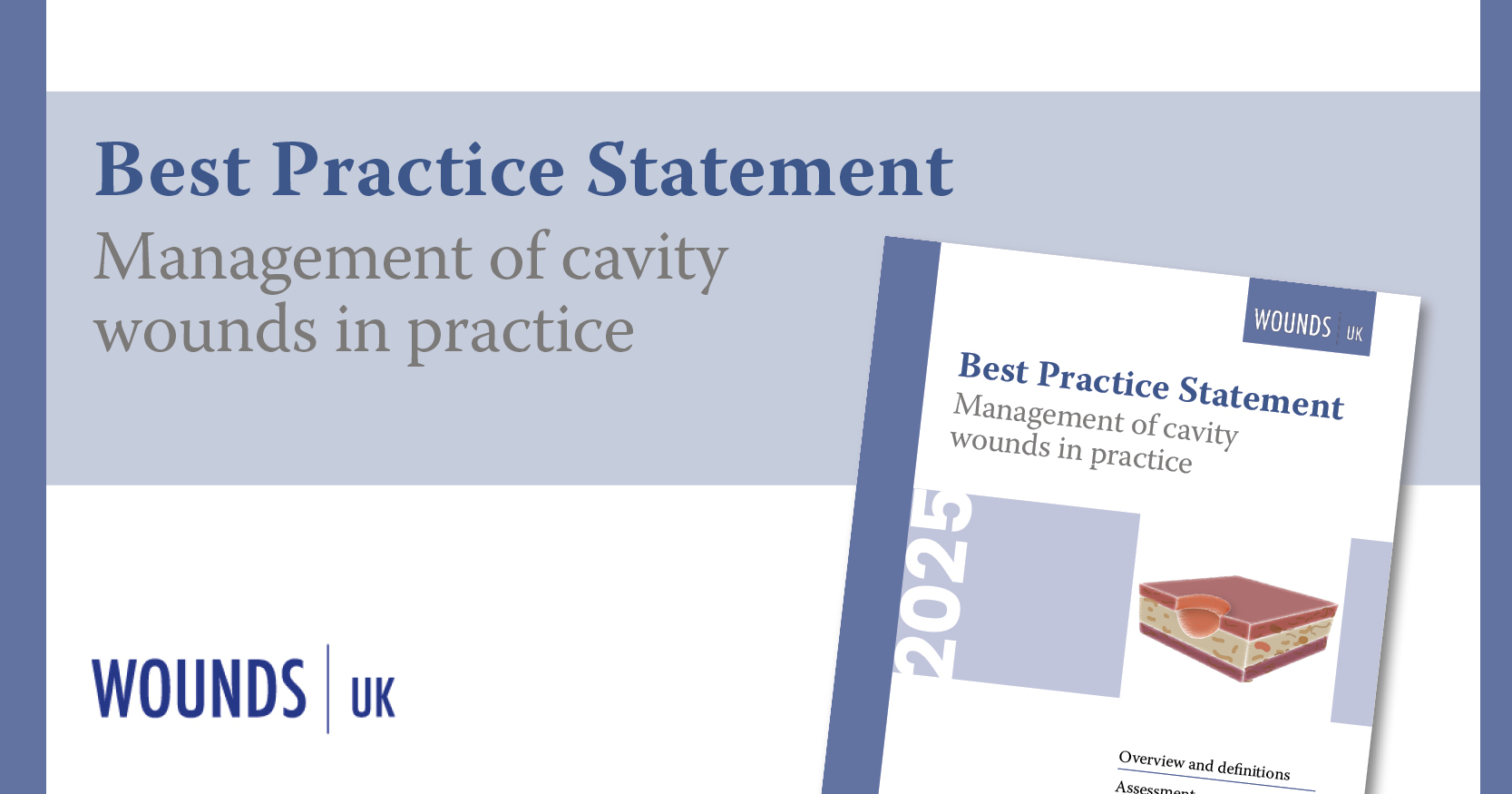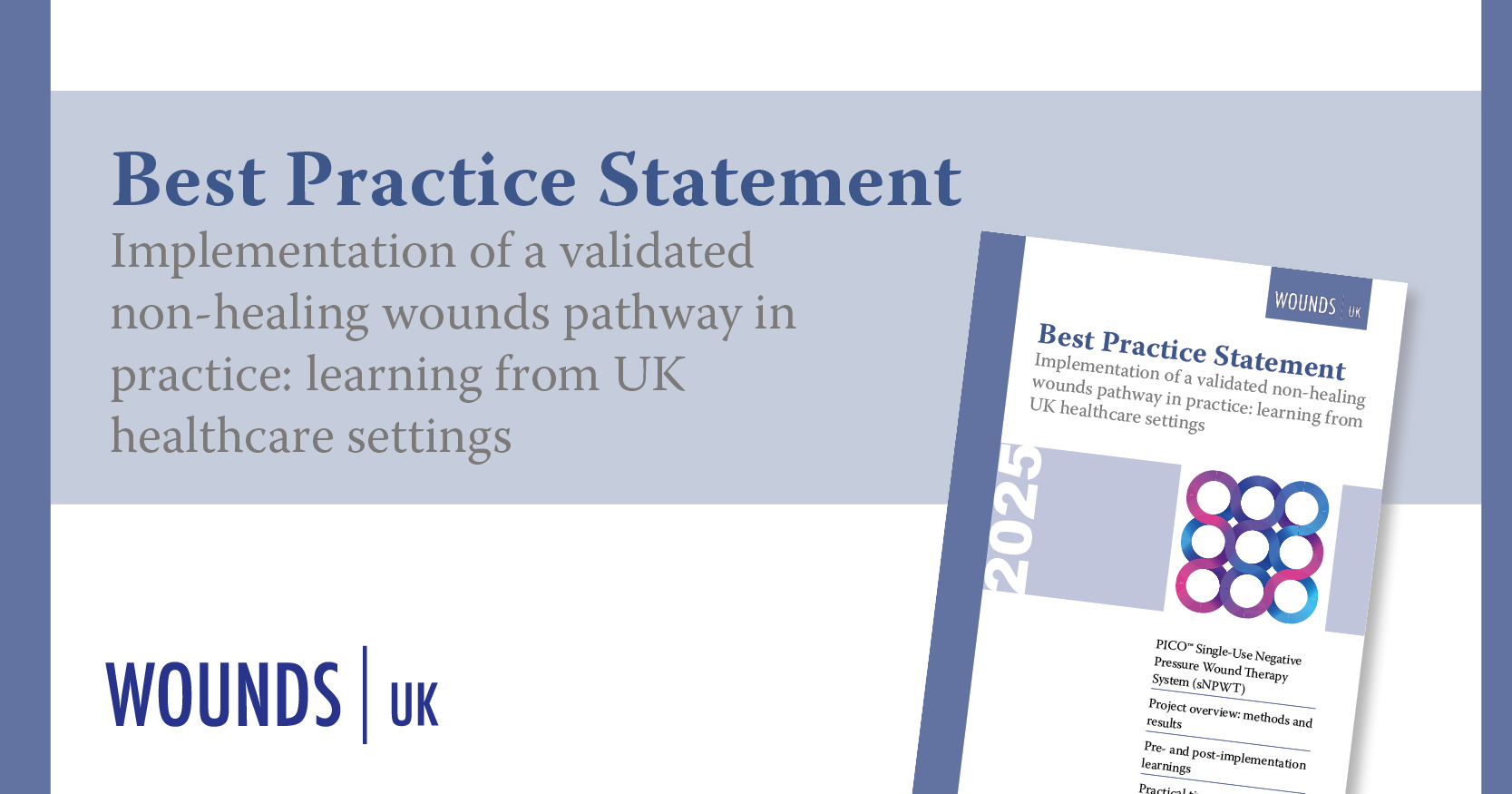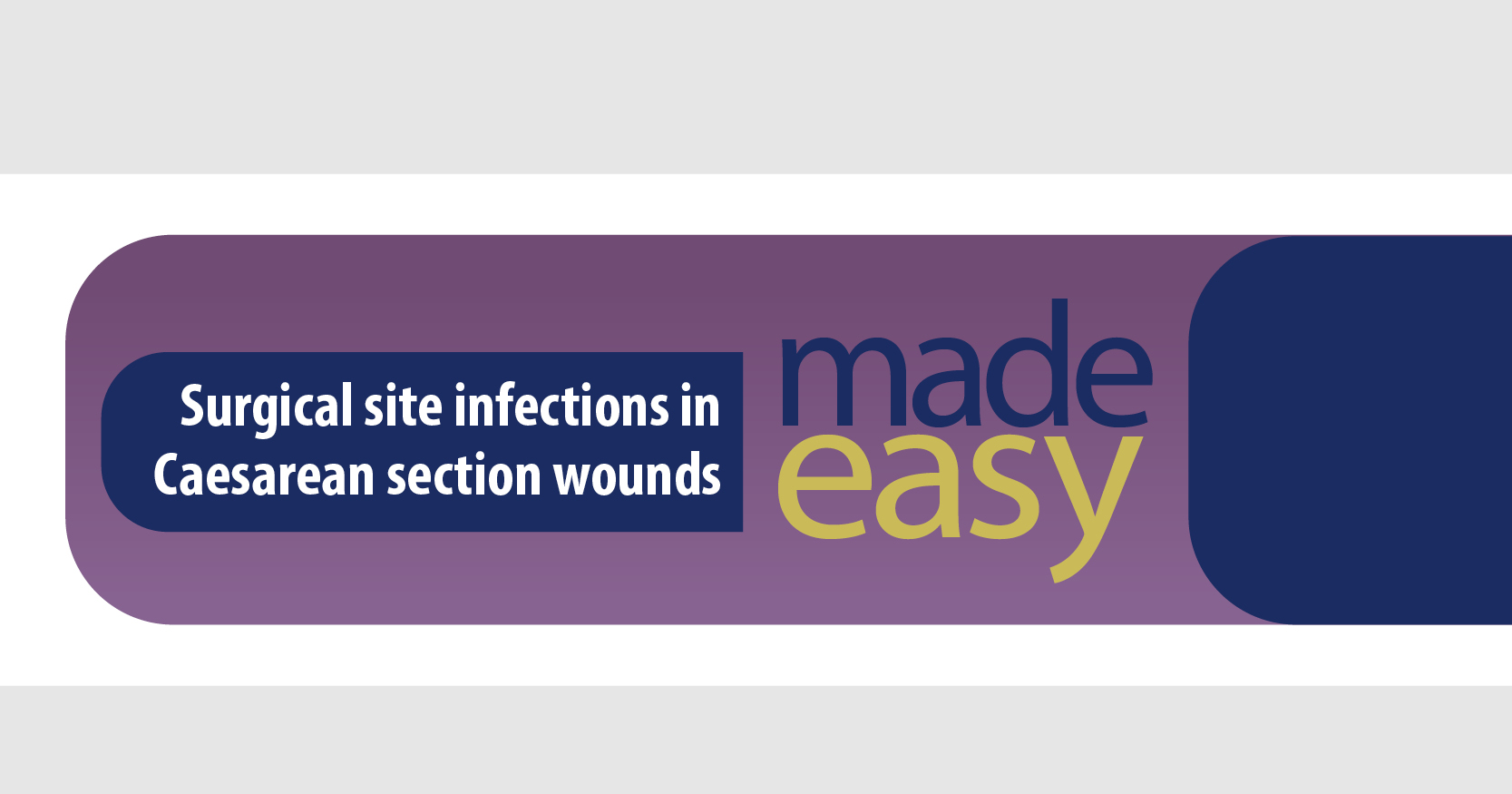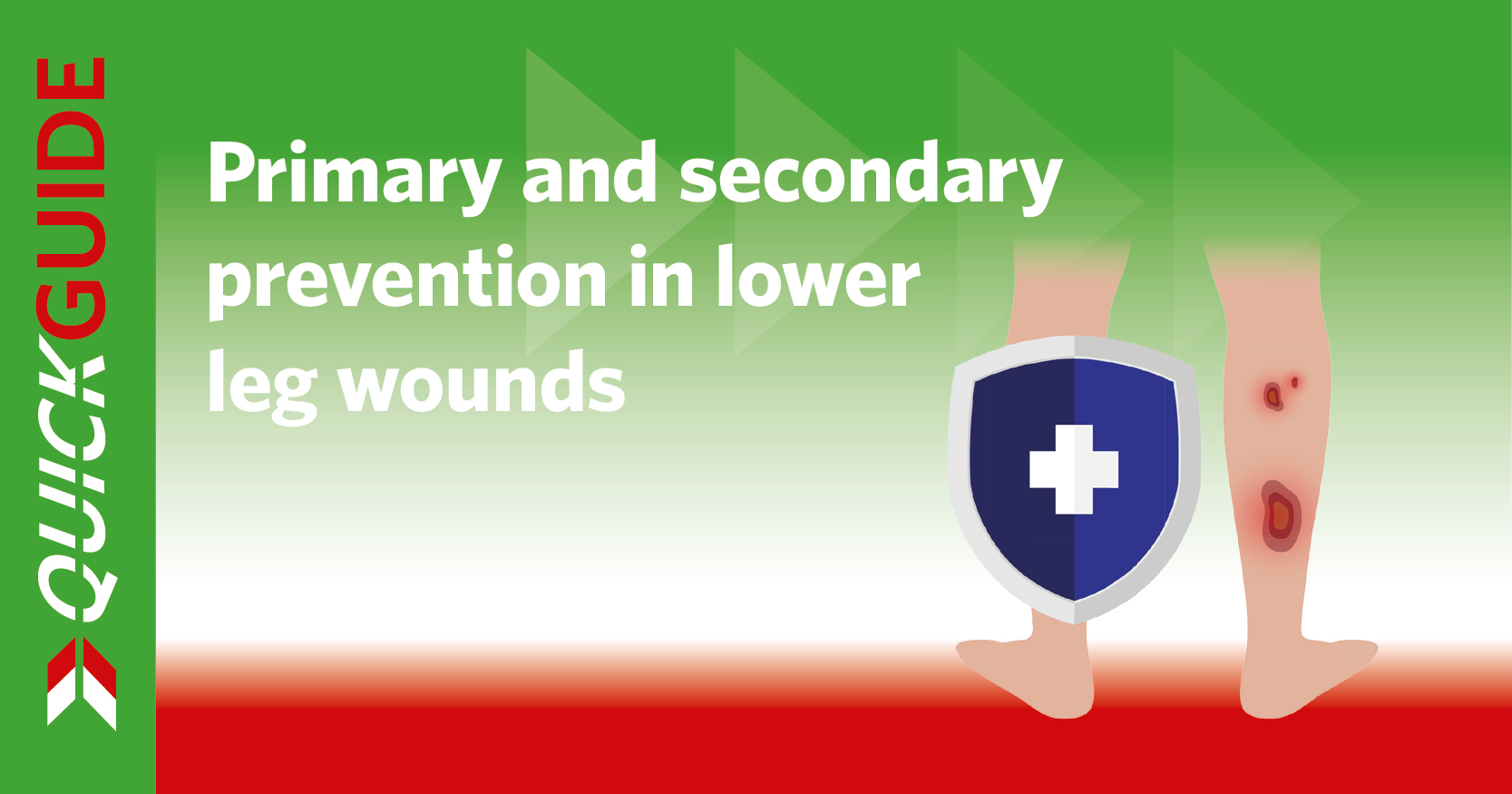ReferencesAtkin L, Bućko Z, Conde Montero E et al (2019) Implementing TIMERS: the race against hard-to-heal wounds. J Wound Care 23: S1-50
Atkin L, Byrom R (2022) The links between heart failure and leg oedema: The importance of compression therapy. Wounds UK
Bengtsson L, Jonsson M, Apelqvist J (2008) Wound-related pain is underestimated in patients with diabetic foot ulcers. J Wound Care 17(10): 433-5
Bjarnsholt T, Eberlein T, Malone M, Schultz G (2017) Management of wound biofilm made easy. Wounds International
Cooper R, Kirketerp-Møller K (2018) Non-antibiotic antimicrobial interventions and antimicrobial stewardship in wound care. J Wound Care 27(6): 355-77
Choudhury M, Downie F (2022) A biofilm based wound care pathway in the community setting: a review. Wounds UK 18(4): 14-20
Davies P, Stephenson J, Manners C (2019) Understanding undisturbed wound healing in clinical practice — a global survey of healthcare professionals. Wounds UK 15(4): 56-65
Dhoonmoon L, Fletcher J, Atkin L et al (2021) Addressing skin tone bias in wound care: assessing signs and symptoms in people with dark skin tones. Wounds UK
Dowsett C, Münter K-C, Bain K, Bain M (2020) Closing the gap between the evidence and clinical practice — a consensus report on exudate management. Wounds International 11(3): 64-8
Fletcher J, Atkin L, Brown D (2023a) The use of compression therapy for peripheral oedema: considerations in people with heart failure. Wounds UK
Fletcher J, Sharpe A, Dowsett C et al (2023b) Best Practice Statement: Development of a wound care formulary using clinical evidence and ensuring effective change management. Wounds UK
Fletcher J, Edwards-Jones V, Fumarola S et al (2020) Best Practice Statement: Antimicrobial stewardship strategies for wound management. Wounds UK
Fletcher J, Fumarola S, Haycocks S et al (2018) Best Practice Statement: Improving holistic assessment of chronic wounds. Wounds UK
Frescos N (2018) Assessment of pain in chronic wounds: a survey of Australian health care practitioners. Int Wound J 15(6): 943-9
Gardner S (2016) Wound dressings: absorbent dressings. Dermatological Nursing 15(4): 10-9
General Medical Council (2024) Mental capacity. Available at: https://www.gmc-uk.org/professional-standards/ethical-hub/mental-capacity (accessed 17.12.2024)
Gray D, Acton C, Chadwick P, et al (2011) Consensus guidance for the use of debridement techniques in the UK. Wounds UK 7(1): 77-84
International Wound Infection Institute (2022) Wound infection in clinical practice. Wounds International
Maddineni NK, Kodura SK, Surath S et al (2015) Negative pressure wound therapy in orthopaedic post-operative infections. Journal of NTR University Health Sciences 4(4): 257-62
Malone M, Bjarnsholt T, McBain A et al (2017) The prevalence of biofilms in chronic wounds: a systematic review and meta-analysis of published data. J Wound Care 26(1): 20-5
Manna B, Nahirniak P, Morrison CA (2023) Wound debridement. National Library of Medicine. Available at: https://www.ncbi.nlm.nih.gov/books/NBK507882/ (accessed 12.12.2024)
Mayer DO, Tettelbach WH, Ciprandi G et al (2024) Best practice for wound debridement. J Wound Care 33(Sup6b): S1-S32
NHS (2005) Mental Capacity Act. Available at: https://www.nhs.uk/conditions/social-care-and-support-guide/making-decisions-for-someone-else/mental-capacity-act/
Morgan-Jones R, Bishay M, Hernández-Hermosa JA et al (2019) Consensus meeting report. Incision care and dressing selection in surgical wounds: Findings from an international meeting of surgeons. Wounds International
Nair HKR, Balasubramaniam S, Frescos N et al (2024) Autolytic continuous debridement with a focus on biofilm management: Consensus document for the APAC region. Wounds International
Ousey K, Pramod S, Clark T et al (2024) Malignant wounds: Management in practice. Wounds UK
Ousey K, Schofield A (2021) Wound bed preparation Made Easy. Wounds UK
Percival SL, Mayer D, Malone M et al (2017) Surfactants and their role in wound cleansing and biofilm management. J Wound Care 26(11): 680-90
Quain AM, Khardori NM (2015) Nutrition in Wound care Management: A Comprehensive overview. Wounds 27(12): 327-35
Roberts CD, Leaper DJ, Assadian O (2017) The role of topical antiseptic agents within antimicrobial stewardship strategies for prevention and treatment of surgical site and chronic open wound infection. Adv Wound Care (New Rochelle) 6(2): 63-71
Sandy-Hodgetts K, Morgan-Jones R, Adi MM et al (2022) Incision care and dressing selection in surgical wounds: findings from a series of international meetings. Wounds International
Smith N, Overland J, Greenwood J (2015) Local management of deep cavity wounds – current and emerging therapies. Chronic Wound Care Management and Research (2): 159-70
Tickle J (2024) Addressing the challenges of cavity wounds in clinical practice. Wound Care Today
Timmons J, Cooper P (2008) How to systemically assess a patient with a cavity wound. Wounds UK (4)2: 4-10
Timmons J, Johnstone D (2022) Cavity wounds: a juicy topic. Wounds UK 18(1): 81-5
Vowden K (2016) Defining, assessing and managing cavity wounds. Wounds UK 12(1): 18-23
Vowden K, Vowden P (2021) Debridement Made Easy. Wounds UK
Weir D, Swanson T (2019) Ten top tips: wound cleansing. Wounds International 10(4): 8-11
Wolcott R, Fletcher J (2014) The role of wound cleansing in the management of wounds. Wounds International 1(1): 25-31
World Union of Wound Healing Societies (2019) Consensus document. Surgical wound dehiscence: Improving prevention and outcomes. Wounds International
World Union of Wound Healing Societies (2020a) The role of non-medicated dressings for the management of wound infection. Wounds International
World Union of Wound Healing Societies (2020b) Optimising wound care through patient engagement. Wounds International
Young T (2017) Back to basics: understanding moisture-associated skin damage. Wounds UK 13(2): 56-65







